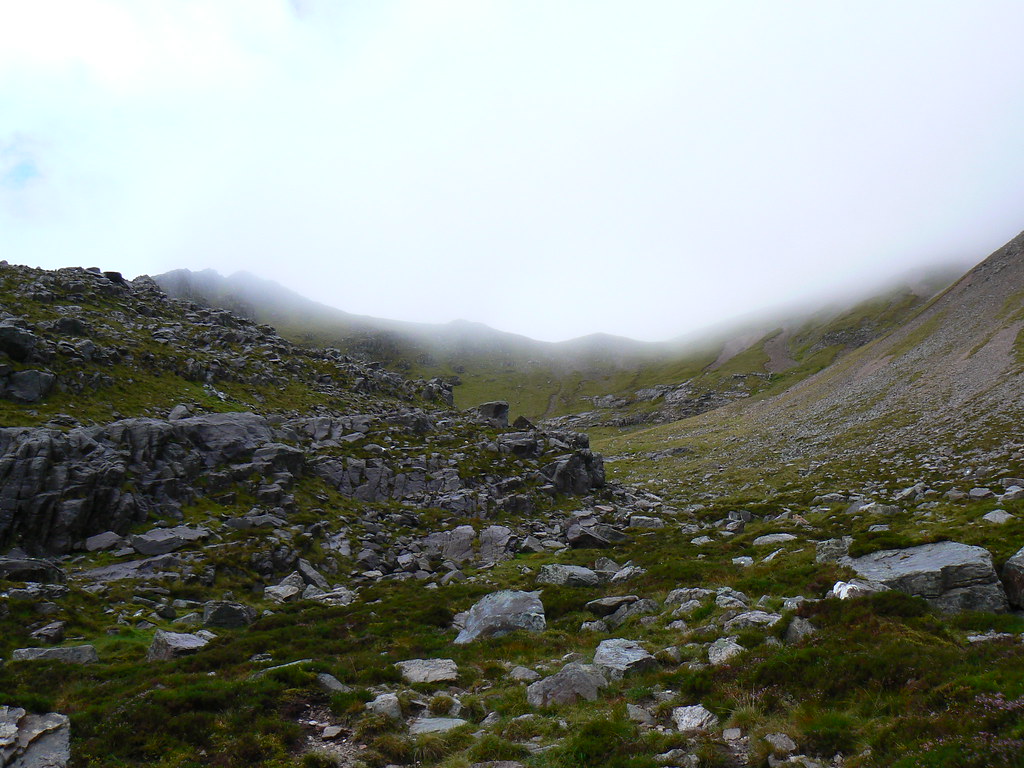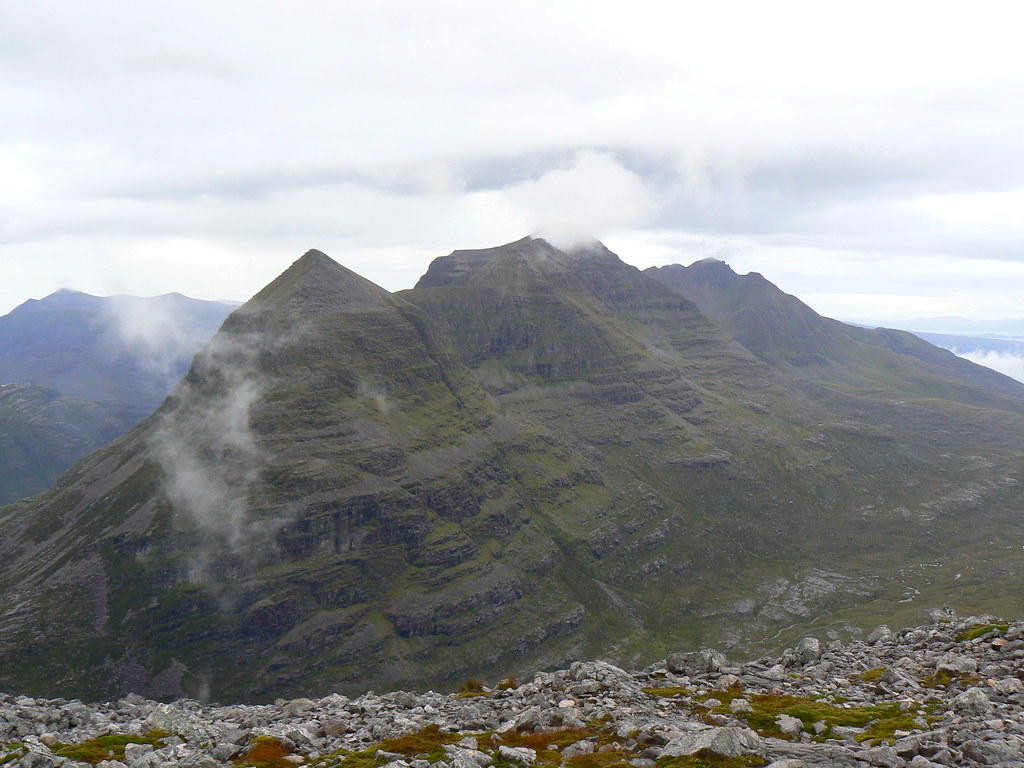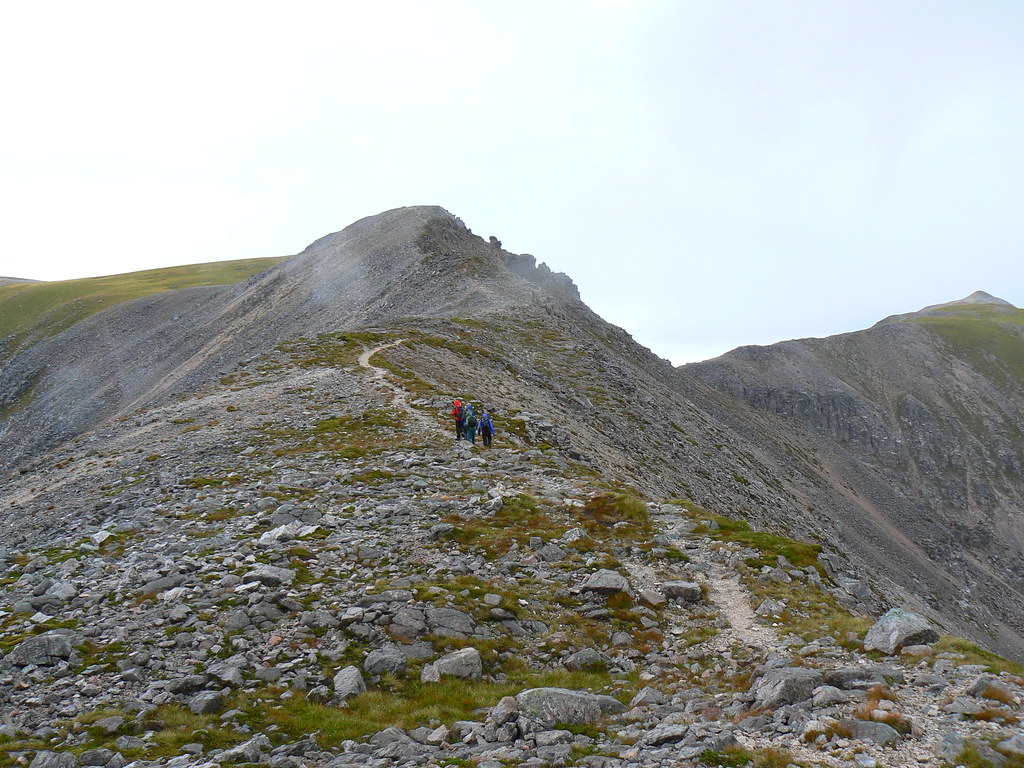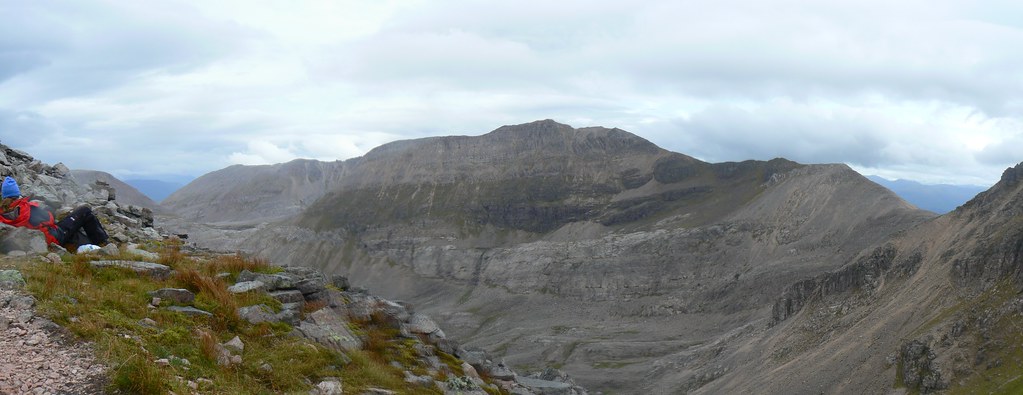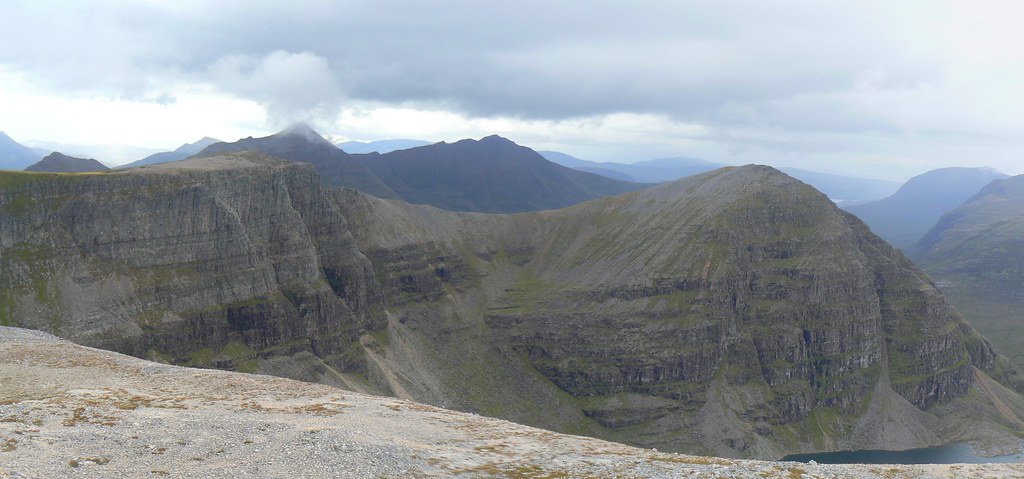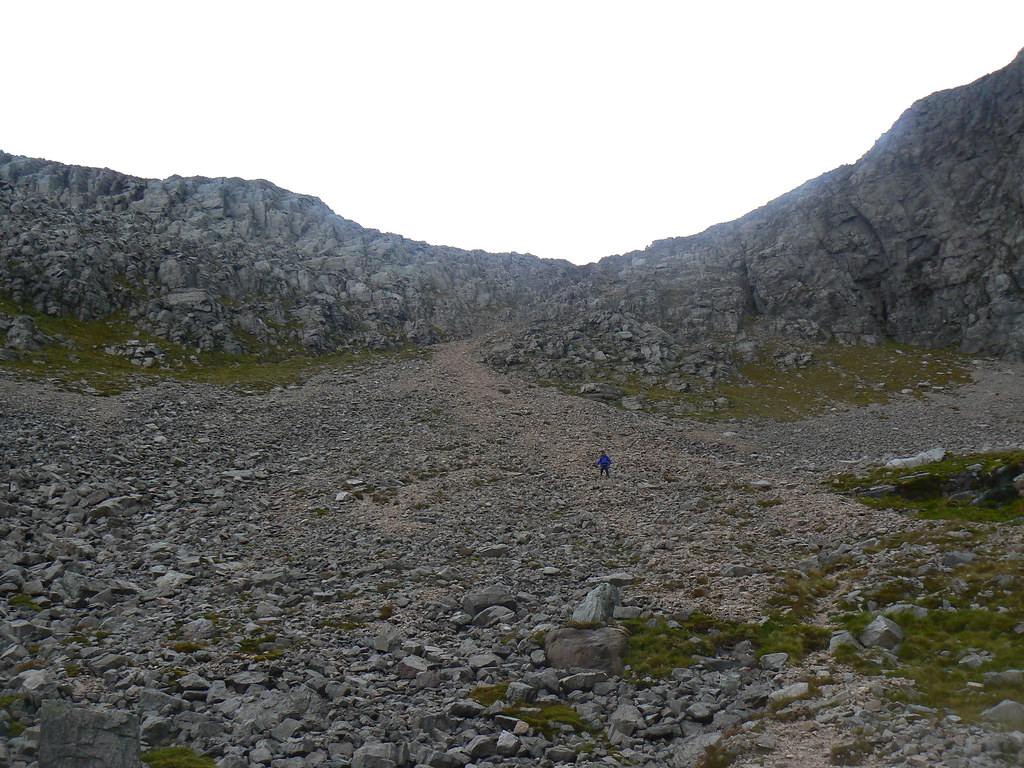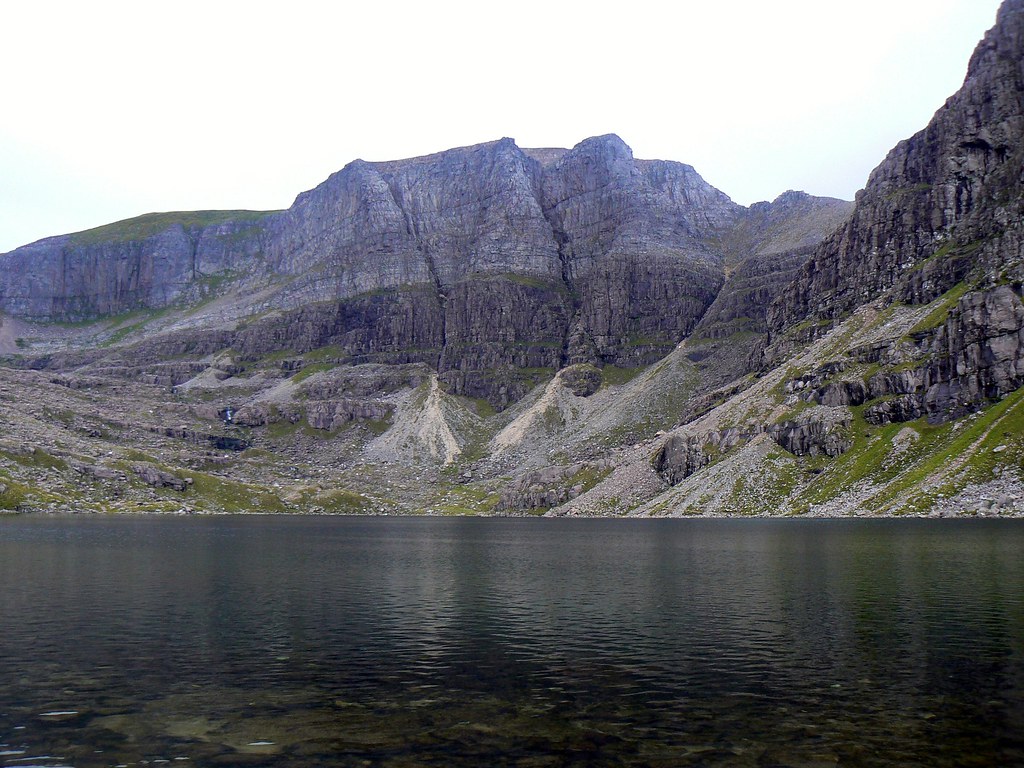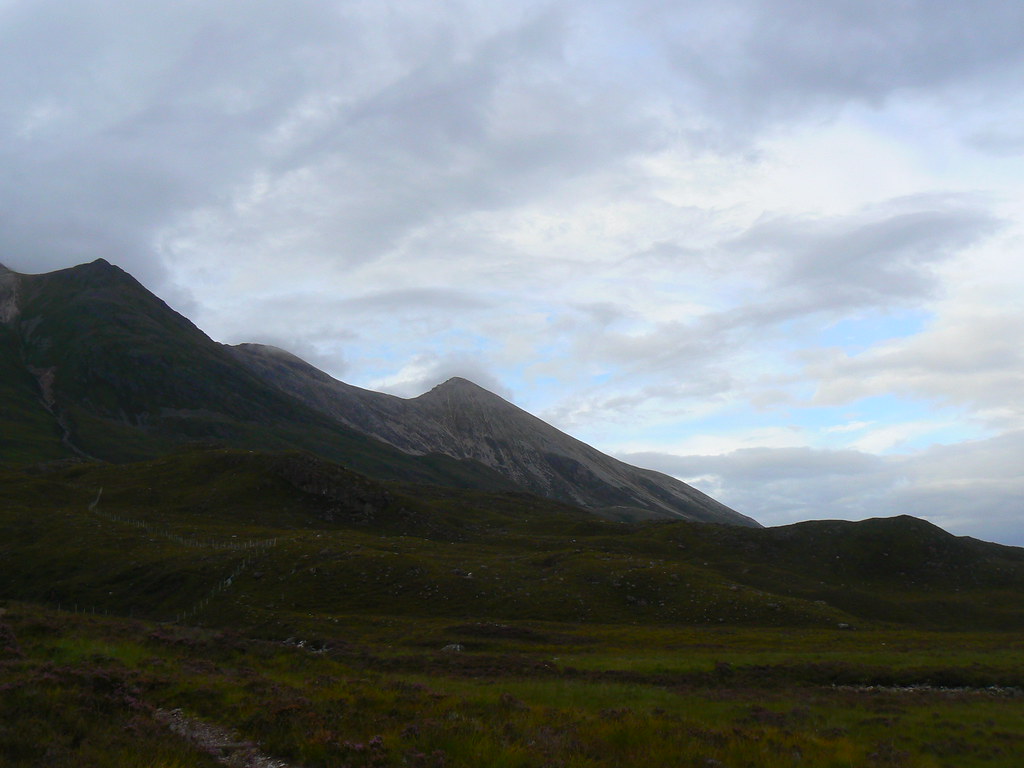Beinn Eighe apparently means File Mountain, but to call it just a mountain doesn't seem to quite do it justice. It's a massive, sprawling massif that occupies a good proportion of the land between Loch Maree and Upper Loch Torridon. With its cap of quartzite it has a particularly distinct, almost Pyranean look about it, particularly once you breach the defenses and get inside the huge central coire.
We approached it from the south, parking at the slightly less used car park near a small stand of trees. Here a good path wound its way up the gentle slopes of the mountain and in towards Stuc Coire an Laoigh. At first the weather was overcast but muggy and although we had set off quite kitted up layers were shed as we got higher up the mountain.
As we got higher we got closer to the cloud base and the final slog up the deeply eroded path that wound its way left of some crags took us finally up and into the mist. We reached a cairn that marked the col below Spidean Coire nan Clach and paused for a bite to eat. No surveying of the scene was done as the scene had well and truly disappeared.
After a short climb along the ridge we dumped our sacks behind the trig point (how many trig points aren't actually at the summit of their parent hill, as in this case?) and scrambled our way up through the lovely, fiddly quartizte splinters and crags to the summit. This was my 20th Munro!
After pausing to enjoy fine views of Scottish mist, a feeling on the exposed summit which gave a strange sense of standing on almost nothing, we returned to the sacks and began our traverse of the ridge.
In fact, traversing between the two Munro summits takes you on a horseshoe around the fabulous Coire Ruadh-Staca. As we came down the trig point a combination of loss of elevation and gain in cloud height caused the views to suddenly open up. Ahead the mighty crenallations of Liathach were very close, and over to our right, away around the ridge was the second summit of Ruadh Stac Mor.
It was a fairly easy walk along the ridge although at times it was very rocky underfoot. It was easy to get distracted by the views of the mountains that were opening up all around. Of course, having left it behind us the summit of Spidean Coire Nan Clach rapidly lost its cloud cover.
I ascended to the summit of the minor top Coinneach Mhor which is recommended simply for the views down from the head of Triple Buttress over Loch Coire Mhic Fhearchair to the Torridon Hills beyond and then to Loch Maree.
We paused for a second bite to eat at the small col which marks the head of the screes down into Coire Mhic Fhearchair. From here the views back across the Coire to Spidean Coire Nan Clach were superb.
Now it was an easy walk north across the grass and boulders that led up to the summit of Ruadh Stac Mhor. The final push involved a brief clamber up some jagged quartzite although for the less adventurous a path also achieves the same destination.
From the summit, now thankfully cloud-free, we had stunning views all around, both back across the ridge to Spidean Coire Nan Clach and down into the Torridon Forest, Flowerdale, Loch Maree, Fisherfield and the jagged pinnacles of An Teallach. Given that Ruadh-Stac Mor stands slightly off the ridge we had views down into the two main coires, in particular the buttresses of Coire Mhic Fearchir.
The top was relatively busy when we arrived but gradually other walkers drifted off until we too were retracing our steps to the col at the head of the scree.
At first the descent was slow and cautious, moving together down quartzite steps away from the eroded path so that any rockfall wouldn't have time to gain too much speed. Then we had the choice to continue down the quartzite steps and then clamber down a boulder field to reach the coire floor, or else to scree sunday rapidly down. I chose the second option and the scree, particularly in the middle third of the run was very good. Larger rocks near the bottom slowed progress but we were soon heading through the marshy land to the head of the Lochan.
It goes without saying that Coire Mhic Feachir is an incredible place. It feels like stone giants, aged faces weathered by years of exposure are gazing down at you. Watchful and silent. It is a natural amphitheater.
We wandered slowly around the lochan with views opening up in front of us. Behind us the three buttresses grew in stature. It was quite shocking though to see the tires, engine block and fuselage of the WWII bomber that crashed into Beinn Eighe shortly after the end of the war.
From the far end of the lochan we got the classic views back to Triple Buttress. We also took the opportunity to gaze out across the wild lands towards Flowerdale.
From here it was a relatively straightforward path around the base of Sail Mhor with Liathach looming ever larger in front. We then came down through the narrow gap between the two, crossing a wide stream by good stepping stones and making it back to the road without too much trouble. The final view of Beinn Eighe was quite different to the first earlier that day - it had been an excellent traverse.
